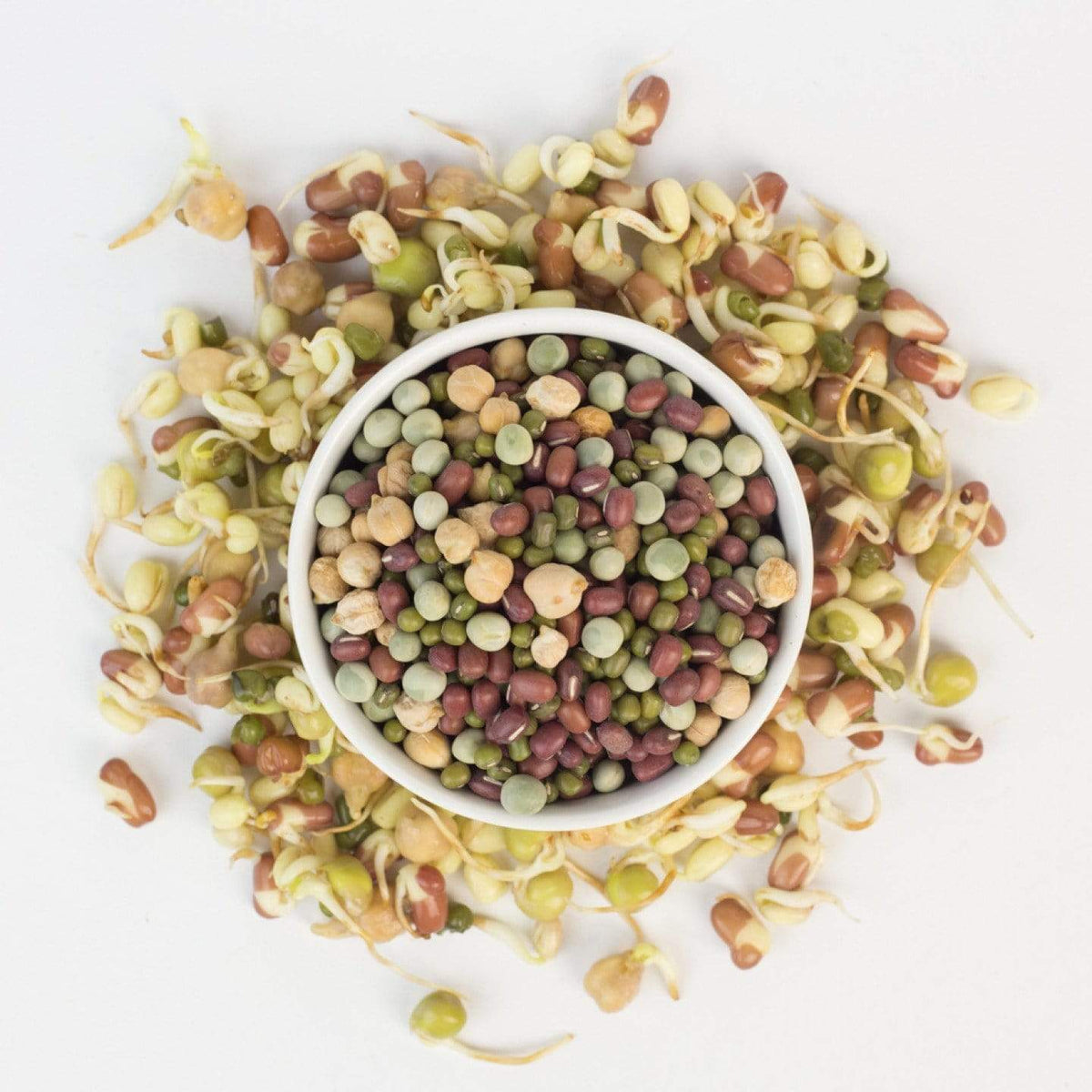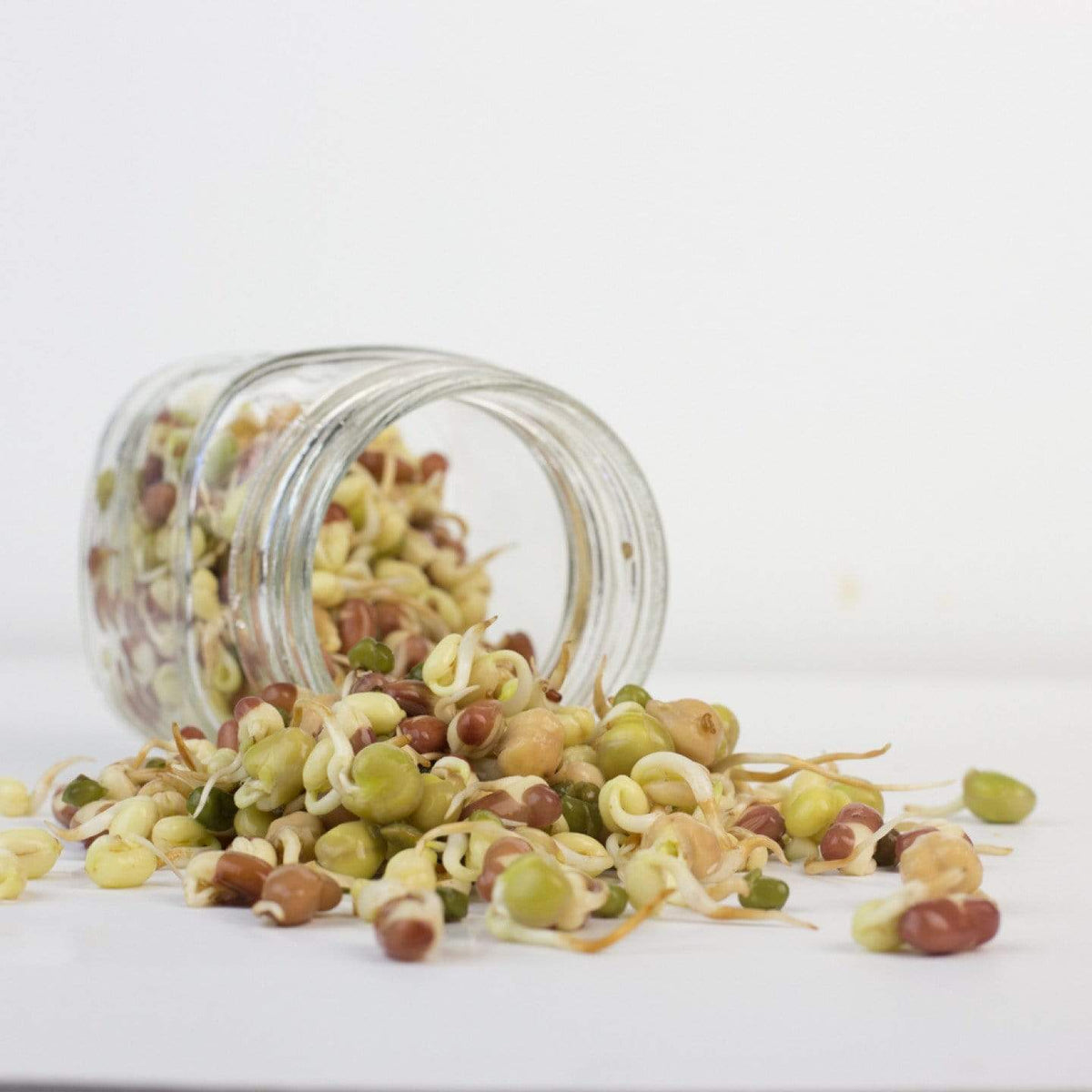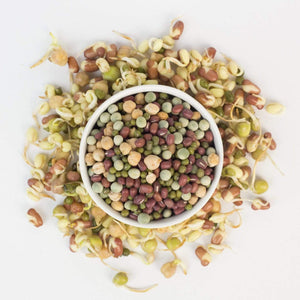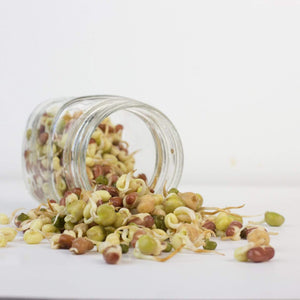
Garbanzo beans, alternatively referred to as chickpeas or sprouted chickpeas, are small yellowish round beans that hold a notable place in Middle Eastern and certain European cooking styles. Their versatile flavor profile ranges from creamy and nutty to a meaty texture, making them an ideal ingredient in a variety of recipes. Garbanzo beans or chickpeas are one of the simplest beans to sprout, or as some might say, to begin sprouting garbanzo beans.
Beans can sometimes pose challenges to digestion, but sprouting, particularly sprouting chickpeas, can assist in improving digestion for some individuals.
Sprouting chickpeas has a multitude of health benefits. These sprouted beans are a rich source of vitamins and minerals such as vitamin C, vitamin K, folate, and manganese. They also contain high amounts of protein, making them a wonderful addition to vegetarian and vegan diets. Moreover, chickpea sprouts can be used in a wide array of dishes such as salads, sandwiches, and stir-fries, providing a wholesome and nutrient-dense crunch.
PREPARING TO SPROUT GARBANZO BEANS, OR INITIATING YOUR JOURNEY IN SPROUTING CHICKPEAS
Before you get started sprouting garbanzo beans, keep in mind these sprouting tips:
- Larger beans sprout better in cooler temperatures. Keep sprouting beans around 68-70°F, if possible.
- Larger beans require a longer soaking period and more frequent rinsing and draining, especially in warmer temperatures.
- Larger beans may not get enough air during draining. Make sure your sprouting container allows plenty of ventilation during draining periods.
- It is normal for the skins to loosen and come off the beans. Either pick the skins out or leave them in, as they do not affect the flavor.
- Sprouted beans require cooking before consuming.
Another point to note when sprouting garbanzo beans or any larger beans is to pay attention to the quality of beans you start with. It is ideal to choose organic beans as they are free from pesticides and other chemicals that might hinder the sprouting process. Also, older beans tend not to sprout as well as fresher ones. Always inspect your beans for signs of mold or infestation, which can occur if the beans have been stored in poor conditions.
THE PROCESS: HOW TO SPROUT GARBANZO BEANS OR SPROUTING CHICKPEAS
- Begin by rinsing ½-¾ cup garbanzo beans, making sure to remove any stones, debris, or split beans. Place these in a quart-size sprouting jar or any other sprouting container.
- Next, add 2-3 cups water, filling the jar three-quarters full, then cover with a sprouting screen ormesh sprouting lid. Allow the garbanzo beans to soak for a minimum of 8 hours, or overnight. Following the soak, drain and rinse the garbanzo beans thoroughly.
- Position the jar over a bowl at an angle to ensure the beans drain whilst still permitting air to circulate.
- Repeat the rinsing and draining process 2-3 times daily until the sprouts or chickpea sprouts reach the desired length, typically around 3-4 days.
- Test the taste of the sprouts (not the beans) each day; halt the rinsing and draining process once the sprouts have achieved the desired length and flavor.
- Before cooking or transferring to a covered container, allow the beans to drain for several hours. Sprouts can be stored in the refrigerator for up to 1 week.
Organic Sprouting Seed Mix
Lastly, it's worth mentioning that cooking sprouted chickpeas correctly is crucial to retain their nutritional benefits. While cooking, ensure not to overheat them as it could lead to loss of nutrients. Steaming or lightly sautéing sprouted chickpeas is an excellent way to cook them without diminishing their nutritional value. Also, remember that like any fresh produce, sprouted chickpeas should be used within a few days of sprouting to ensure their freshness and maximize their health benefits.





















